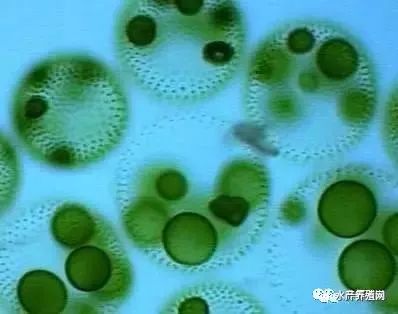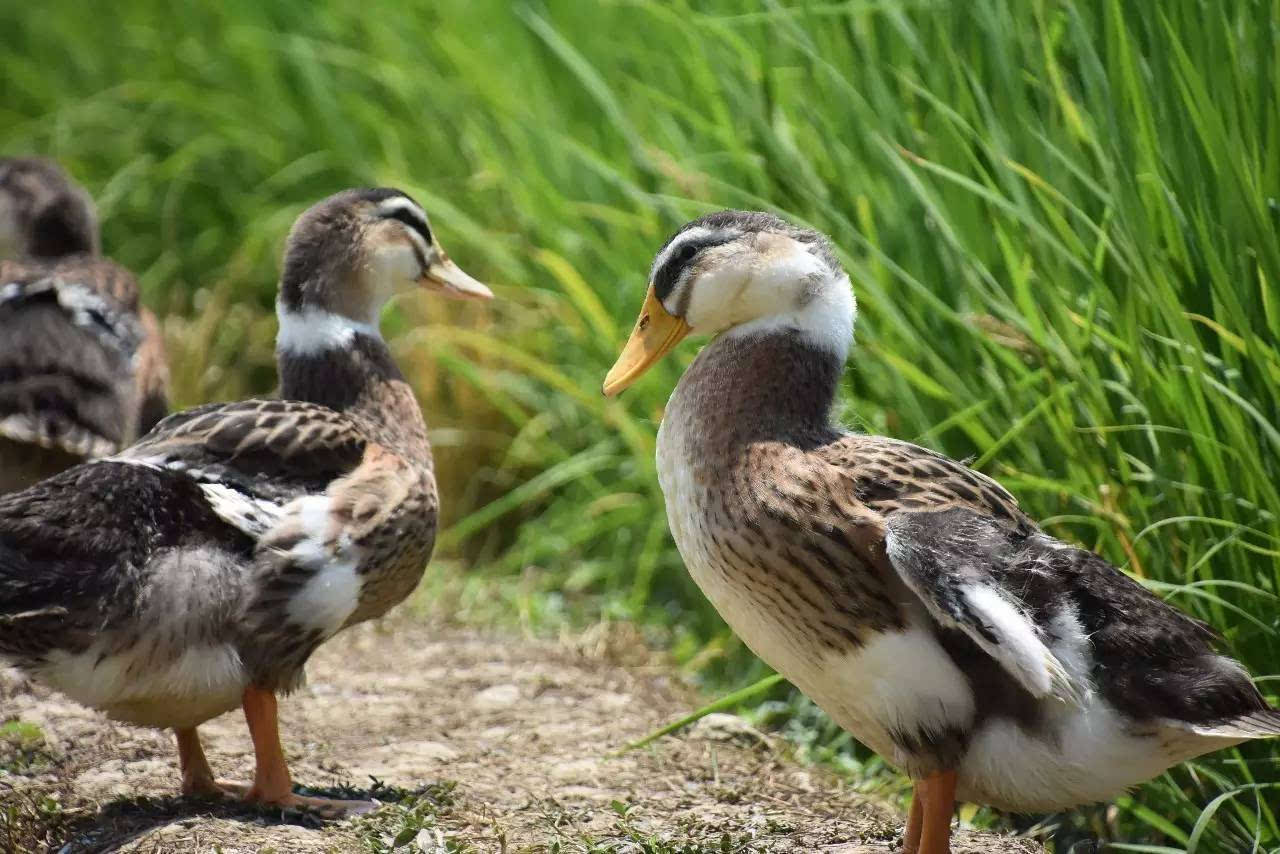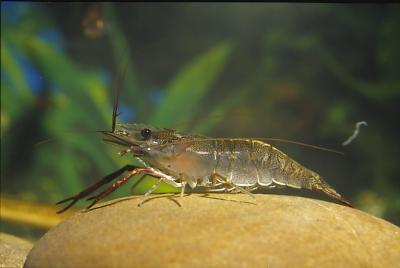It is difficult to raise lobsters without good water. What kind of water is good water?
"algae" and "bacteria" that you don't understand.
What on earth is circulating and purifying the water in an aquaculture water?
Bacteria and algae in aquaculture should be regarded as one of the most basic and most important things for farmers to know. However, as a crayfish farmer, do you know these two things? What kind of role does it play in aquaculture water, what is it, and how do we use and treat it? The following is a brief introduction to bacteria and algae, hoping to help farmers understand and be aware of it, and help you cultivate successfully!
The difficulty of aquaculture is obviously more difficult than that of raising pigs, ducks, chickens and sheep on land, because things in the water are invisible to our eyes, and some changes in the water are greatly affected by climate and weather. It takes a lot of experience to deal with it, which is the difficulty of aquaculture!
First of all, we can take, for example, raising chickens, we make an analogy with aquaculture crayfish! Suppose that in a chicken ring, the chickens we raise keep eating and drinking, producing a lot of feces, as well as unfinished feed on the ground, etc., in the process of breeding, we can obviously see the existence of these breeding wastes, and our eyes can obviously see it, so we will deal with it artificially, but when we compare to aquaculture, most farmers lose this consciousness and think that what is in the water. If there is a lot of water, we can ignore it, which is the biggest misunderstanding of farmers.
In the process of aquaculture, there will be a large amount of animal waste that we need to deal with artificially in order to create a good water environment, so that aquatic animals grow faster and do not get sick! It is understandable that most new crayfish farmers lack this awareness, because there are many large bodies of water in our nature, such as reservoirs, lakes, etc., in which there are a large number of aquatic animals constantly producing feces and garbage, however, the water quality is still good? Why is that? For example, a reservoir that has not cleared the pond for 20 years, its water is still good, and the fish still grow very well. in theory, after 20 years, the fish has produced a lot of garbage in it, how can it still be so?

That is because there are some things in a water body that can purify the water quality and constantly repair the water quality, that is, the "algae" and "bacteria" in the water. What on earth are the two?
Let's talk about what algae is.
Algae is a kind of microorganism that exists in all water bodies and water in nature. it is a living thing, can live, can die, can be active, can not be active.
When there are a lot of algae in the water, it forms our naked eye to see directly, the water has color! What we see most is our fish pond water, which is generally thicker, for example, green water, the color of the water is green, that is, algae in the water, so that our water looks green, the color of the water is different, indicating that the species of algae inside is different, the level of transparency is usually the number of algae, the higher the transparency, the less the algae, the thicker the water, the more algae.
This is algae! This algae is always purifying the water quality, the droppings of aquatic animals, we feed the unfinished part, if there is no purification effect of algae, it will make a culture water constantly accumulate a large amount of garbage, and finally the whole culture water will be paralyzed and deteriorated!
This is our algae, it is a living microorganism in the water, we can not see it, but through the color of the water, we can feel its existence, many people pond mouth water color difference, turbid, and so on show that our culture water algae do not reproduce well to achieve the role of purifying water, the reason is that a culture water, not all suitable for this kind of algae growth, we must create an environment. Let this algae grow well, so our water color is good, the purification effect of algae is good, the mouth of our culture pond can be clean, and aquatic animals can grow fast! How to create a good water environment for algae to grow well is the next article I want to talk about, this section first let farmers know what is called algae, and its role! In addition, what we usually call algae refers to algae that are good for aquatic animals, also known as beneficial algae.
Because there are many kinds of algae in the water, when our water color is not good, the color is bad, it means that the bad algae dominates our culture water, at this time, the water quality deteriorates and the crayfish grows slowly! When our aquaculture algae grow well, the color of our aquaculture water is good, generally close to green, brown water is a better color of water, giving us the feeling that the water is alive, fat and tender. The so-called fat and tender means to describe the good growth of algae in the water, and our crayfish grow faster!
What is "bacteria"?
Bacteria are bacteria! Bacteria this thing, most farmers only know that it is not good, because we hear too much in life, but usually the bacteria mentioned above in aquaculture, it refers to beneficial bacteria, is a kind of bacteria, it is good for our aquaculture water, good for lobster, this kind of bacteria, we call it beneficial bacteria!
It is a kind of bacteria that exists in the water itself! But it plays more benefits, but what kind of role does it play in an aquaculture water?
Like algae, it constantly purifies the water quality, which is its characteristic. For example, lobster feces, unfinished food, rotten grass roots, and these aquatic wastes all need this kind of bacteria in the water to constantly decompose and repair an aquaculture water. This is also a bacteria that we can't see.
But it continues to play a role in the aquaculture water, when the apparent density is low, the bacteria in the water can decompose very well, so that the water quality does not deteriorate. Like the algae in the water, it is a living thing.
They complement each other and restrain each other to maintain a stable aquaculture water color!
The bacteria and algae mentioned above, I hope that farmers who have not yet come into contact and understanding can read and have a look and simply understand the common sense problem! The above algae and bacteria, in aquatic products, we judge whether an aquaculture water is good or not, based on the two, we call them "algae phase" and "bacterial phase".
That is, when we look at an aquaculture water with the naked eye, we go to see whether the algae and bacteria in the water are good, which can be based on the senses of the eyes, and we can also know whether it is good or bad with the help of some simple tools. In most cases, we can see whether it is good or bad with the naked eye. Of course, this requires experience, and farmers need to look at more water bodies and learn some simple theoretical knowledge. Finally, the good one can be distinguished!
How can farmers tell if it is good water?
Aquaculture "water" is always the core, aquaculture first water, crayfish farming the same truth, in crayfish widely spread a saying is: raise shrimp first raise grass, there is grass to have shrimp. This sentence has its correct angle, but the misunderstanding it brings to crayfish farmers is quite big, which causes many novice farmers to ask what grass first without asking for water. This wrong understanding is the death of crayfish farmers.
The first core of aquaculture is "water". The growth and life activity of crayfish is in water, even if it can live in soil or places with dense aquatic plants, which is just some stress behavior in the face of the environment.
Only in "water" can we achieve real growth, and it has nothing to do with grass! Therefore, the regulation of aquaculture water is often ignored by farmers. The following are some questions about the discrimination of aquaculture water.
First, what kind of water is good water?
Aquatic products are the same, most aquaculture, the requirements of the water color is basically the same, its transparency is different! Can be turned into a good water, there are the following factors, first, dissolved oxygen is relatively high, followed by ph fluctuations, the value is in the normal range. The concentration of ammonia nitrogen is low, the phytoplankton in the water is more active, and the beneficial bacteria in the water dominate the bottom layer!
However, these theoretical data are very boring and are often ignored by farmers, and traditional farmers often do not have this awareness to understand and distinguish! But even so, we can judge an aquaculture "water", an aquaculture water by subjective experience, when presented to our naked eye, we can see whether it is good or bad at a glance, we can judge some theoretical data of water through experience. This kind of experience is what farmers lack and needs to be cultivated.
Second, what kind of breeding "water" is good?
Mainly depends on the transparency and color of the water! It is very simple to say, in addition to color blindness, everyone can distinguish the color, but in the actual breeding, it has become a breeding difficulty! The color of aquaculture water is strange, the theory usually says: green, light green, brown, light brown. It is the ideal water color for aquaculture. This kind of water color is very suitable for raising lobster!
But in fact, when it comes to the practice of our farmers, we are foolishly confused. What kind of water is this kind of water that we describe? The reason is that there are too many factors in the aquaculture water, such as floating matter, suspended residue in the water, and the color of the water will change differently because of the light during the day. These factors make it difficult for farmers to distinguish between colors.
Third, the best way to distinguish
To distinguish whether it is "good water for aquaculture", in aquaculture theory, four words are used to describe good water: "bacterial phase" and "algal phase".
Algal phase represents the general color of water, bacterial phase represents the turbidity and activity of a water! In other words, an aquaculture water should be called good water, that is, how to distinguish between "bacteria" and "algae".
When farmers distinguish, it is first of all a matter of time:
1. The water color is the most standard at noon, because there is plenty of light at this time.
2. do not be affected by the floating objects on the water surface to see the water, and throw the floating objects on the boiled water surface to see the color of the water.
3. Look at the color of the water, whether it belongs to green or brown to make tea.
4. Look at the transparency of the water, the transparency is kept at 30. About centimeters, it can be slightly higher in summer
5. Look at the number of suspended particles in the water, it is a sense of turbidity, some water color is good, but obviously turbid
6. The lower the coverage of the floating matter in the whole pond, the better, and the less the floating matter in the downwind outlet, the better the bacterial phase.
7. When the water is in a windless state, it gives people a sense of its activity and freshness, which means that the microbes in the water are active.
Compare the difference of culture water under different topographical conditions, for example, the open area of the plain. For example, a zone where several mountains are sandwiched with water. For example. Small water surface and large water surface, under this kind of terrain condition difference, an aquaculture water, where is the difference?
Fourth, what is meant by "bacterial phase" and "algal phase"
"bacterial phase" and "algal phase" are two key words in aquaculture to describe an aquaculture body! We want to use theory to describe the differences and phenomena of aquaculture water in practice, so these two aquatic nouns appear. Its significance is to help us express the quality of an aquaculture water, as well as transmit the knowledge of aquatic products theory!
As the name implies, the so-called "bacterial phase" is the surface phenomenon of bacteria. In aquaculture, there is a kind of bacteria constantly treating the garbage in an aquaculture water body. This kind of garbage is our artificial feeding and aquatic animal feces, as well as animals and plants that rot in the water, will rely on this kind of bacteria to decompose the garbage, so we use "bacterial phase" to describe an aquaculture water body with good bacteria. It's not cloudy. It gives people a feeling of cheerfulness and less suspended particles. On behalf of this kind of beneficial bacteria played a good role in decomposition!
The so-called "algal phase", as the name implies, refers to the sensory phenomenon of microbial algae in an aquaculture water. One of these algae releases oxygen to the water under light conditions during the day, and the other is that it is food for aquatic animals. Crayfish absorb this kind of algae in the water for 24 hours to achieve the role of growth, so this "algae phase" must be good, first of all, the color is good. A good color means that this kind of algae in the water is suitable for lobster absorption. The second is good gloss and vitality, which means that the algae grow well in the water and are in an active state. Finally, the transparency is moderate. This means that the density of algae in the water is moderate. Not too much, not too low. Too low water is thin, too high water is too fat, water is too fat at high temperature, algae respiration is high at night, and oxygen consumption is serious!
- Prev

What technical details should be paid attention to in raising ducks in rice fields?
What technical details should be paid attention to in raising ducks in rice fields?
- Next

If you want to double the output of freshwater shrimp, remember to feed it like this.
If you want to double the output of freshwater shrimp, remember to feed it like this.
Related
- On the eggshell is a badge full of pride. British Poultry Egg Market and Consumer observation
- British study: 72% of Britons are willing to buy native eggs raised by insects
- Guidelines for friendly egg production revised the increase of space in chicken sheds can not be forced to change feathers and lay eggs.
- Risk of delay in customs clearance Australia suspends lobster exports to China
- Pig semen-the Vector of virus Transmission (4)
- Pig semen-the Vector of virus Transmission (3)
- Five common causes of difficult control of classical swine fever in clinic and their countermeasures
- Foot-and-mouth disease is the most effective way to prevent it!
- PED is the number one killer of piglets and has to be guarded against in autumn and winter.
- What is "yellow fat pig"? Have you ever heard the pig collector talk about "yellow fat pig"?

